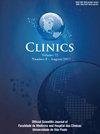Arthroscopic superior capsule reconstruction with dermal allograft and autologous long head of the biceps tendon for irreparable posterosuperior rotator cuff tears, a two-year clinical and radiological results
IF 2.4
4区 医学
Q2 MEDICINE, GENERAL & INTERNAL
引用次数: 0
Abstract
Background
A 2 mm-thick dermal allograft and autologous Long Head of the Biceps Tendon (LHBT) Superior Capsule Reconstruction (SCR) could provide improved clinical and radiographic outcomes for posterosuperior Massive Irreparable Rotator Cuff Tears (MIRCTs).
Methods
A retrospective study was conducted between April 2019 and October 2021. The LHBT was rerouted 5 mm posteriorly to the bicipital groove, and a 2 mm-thcick dermal allograft was used to cover the rerouted LHBT. Clinical assessment included Constant-Murley Shoulder score (CMS), American Shoulder and Elbow Surgeons (ASES) score, Subjective Shoulder Value (SSV), Visual Analog Scale (VAS) pain scores, and active ROM measurements. The radiological assessment included Acromiohumeral Distance (AHD), Superior Capsular Distance (SCD), muscle Fatty Infiltration (FI), and follow-up SCR integrity using ultrasound two years after surgery.
Results
25 patients (7 male, 18 female) were included with a mean age of 64.2 ± 6.9 years. Active ROM, AHD, and SCD did not change significantly after the surgery. Patients' VAS (8.3 ± 0.7 to 1.3 ± 0.6, p < 0.001), SSV (22.4 ± 8.6 to 77.6 ± 12.7, p < 0.001), CMS (36.2 ± 6.8 to 79.9 ± 8.4, p < 0.001), and ASES (37.2 ± 10.0 to 80.5 ± 5.7, p < 0.001) improved significantly at final follow-up. The ultrasound examination of all patients demonstrated a healed dermal allograft on the supraspinatus footprint. One patient (4 %) had a postoperative trauma causing irreparable subscapularis tear, leading to reverse total shoulder arthroplasty during revision surgery.
Conclusions
The combined SCR technique using a 2 mm dermal allograft and autologous LHBT for posterosuperior MIRCTs significantly improved the patient-reported outcomes.
关节镜下用真皮异体移植和自体肱二头肌长头肌腱重建上囊,治疗不可修复的后上肩袖撕裂,临床和影像学结果两年
背景:2mm厚的同种异体真皮移植和自体肱二头肌腱长头(LHBT)上囊重建(SCR)可以改善后上大块不可修复肩袖撕裂(mirct)的临床和影像学结果。方法于2019年4月至2021年10月进行回顾性研究。LHBT向后移5mm至肱二头沟,用2mm厚的同种异体真皮移植物覆盖LHBT。临床评估包括Constant-Murley肩部评分(CMS)、American Shoulder and肘部外科医生评分(ASES)、主观肩部值(SSV)、视觉模拟量表(VAS)疼痛评分和活动ROM测量。放射学评估包括肩肱骨距离(AHD)、上囊距离(SCD)、肌肉脂肪浸润(FI)以及术后2年超声随访SCR完整性。结果共纳入25例患者,其中男性7例,女性18例,平均年龄64.2±6.9岁。术后活动ROM、AHD和SCD无明显变化。患者VAS评分(8.3±0.7 ~ 1.3±0.6,p <;0.001), SSV(22.4±8.6 ~ 77.6±12.7,p <;0.001), CMS(36.2±6.8 ~ 79.9±8.4,p <;0.001), asa(37.2±10.0 ~ 80.5±5.7,p <;0.001)在最终随访时显著改善。所有患者的超声检查显示在冈上肌足迹上有愈合的同种异体真皮移植物。1例(4%)患者术后创伤导致不可修复的肩胛下肌撕裂,导致翻修手术期间逆行全肩关节置换术。结论联合SCR技术采用2mm真皮同种异体移植物和自体LHBT进行后上位mirct,显著改善了患者报告的结果。
本文章由计算机程序翻译,如有差异,请以英文原文为准。
求助全文
约1分钟内获得全文
求助全文
来源期刊

Clinics
医学-医学:内科
CiteScore
4.10
自引率
3.70%
发文量
129
审稿时长
52 days
期刊介绍:
CLINICS is an electronic journal that publishes peer-reviewed articles in continuous flow, of interest to clinicians and researchers in the medical sciences. CLINICS complies with the policies of funding agencies which request or require deposition of the published articles that they fund into publicly available databases. CLINICS supports the position of the International Committee of Medical Journal Editors (ICMJE) on trial registration.
 求助内容:
求助内容: 应助结果提醒方式:
应助结果提醒方式:


